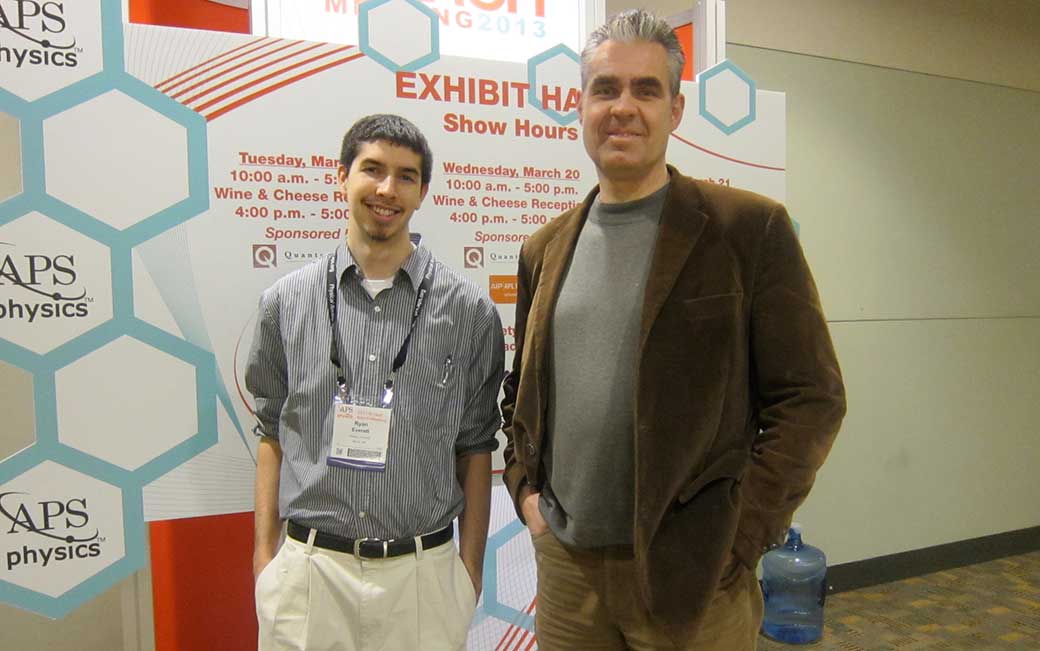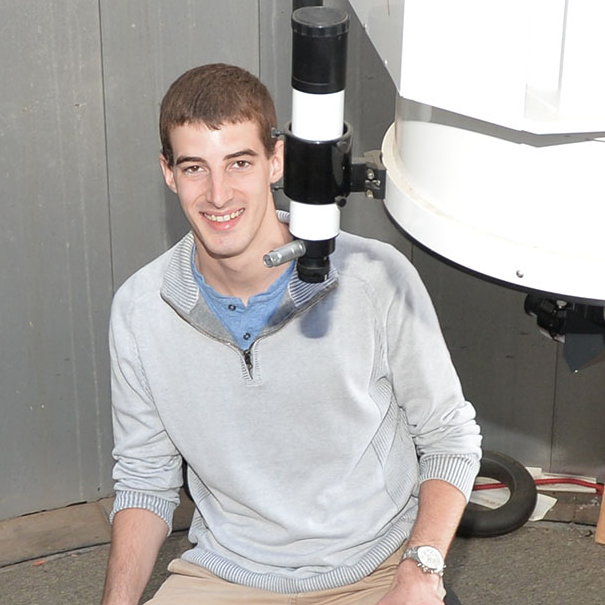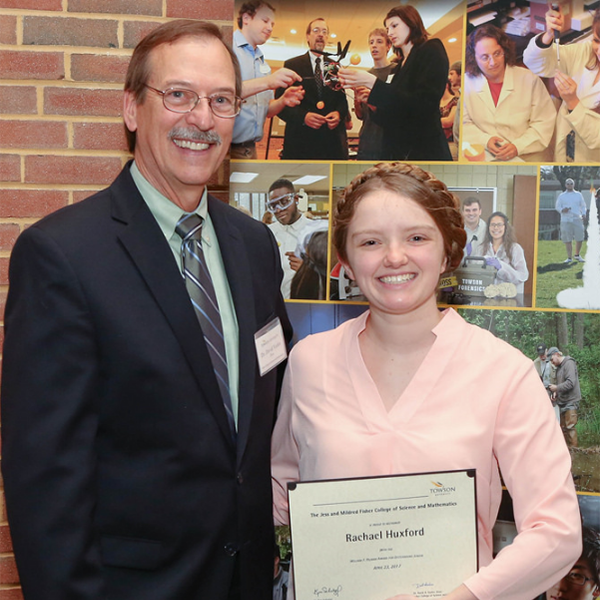TU plays a small part in a big discovery: gravitational wave detection wins 2017 Nobel Prize
Three TU students worked behind the scenes to help make history in proving Einstein’s Theory of General Relativity
By Megan Bradshaw on October 3, 2017

When Albert Einstein predicted the existence of gravitational waves about 100 years ago, they were undetectable.
Rainer Weiss, Ph.D., from the Massachusetts Institute of Technology (MIT) and Kip Thorne, Ph.D., and Barry Barish, Ph.D., of the California Institute of Technology, earned the 2017 Nobel Prize in physics on Tuesday for their discovery of the ripples in space-time known as gravitational waves, an event the Royal Swedish Academy called world-shaking.
According to The New York Times, the three scientists are the founders and leaders of the Laser Interferometer Gravitational-wave Observatory (LIGO), the instrument that detected the gravitational waves and the sister organization, the LIGO Scientific Collaboration, of more than 1,000 scientists who analyzed the data.
Three of those scientists were Towson University’s Ryan Everett ’13, Nathan Prins ’15 and Rachael Huxford ’18.
Everett was introduced to gravitational waves during a summer school crash course taught by LIGO team members at the University of Texas in Brownsville in 2012. He made a deep dive into the subject while working as an undergraduate with TU physics professor James Overduin, Ph.D. At graduate school at Penn State, he studied with Chad Hanna, Ph.D., another member of the LIGO collaboration.
After leaving PSU upon the birth of his daughter, Everett re-teamed with Hanna on a part-time basis as a computer scientist to improve the code LIGO was using to detect gravitational waves. Everett was a co-author on the paper that announced LIGO’s discovery in February 2016.
“It has to be stated how amazing this is and what humans are capable of doing,” said Everett. “Gravitational waves stretch and squeeze space-time. The amazing thing is how small that stretching and squeezing is – a strain of 10-21. To put [this discovery] into perspective, a strain that small is equivalent to trying to detect a change in length of the entire Milky Way galaxy equivalent to the width of your thumb. I think it is a testament to what humans are capable of doing.”
Related: From Legos to LIGO: alumnus Ryan Everett’s journey into physics history

Prins, another of Overduin’s undergraduate research students, joined the quest for gravitational waves through a 2014 summer research internship program organized by LIGO at the Albert Einstein Institute in Hannover, Germany. There he worked on designing and testing optical components for a small-scale version of the LIGO detector known as the “10-meter prototype,” which serves a testbed where the experimenters try to push future technological advances to the limit of what is theoretically possible.
Related: Beyond Einstein: TU professor, students investigate whether Einstein can be outsmarted

Huxford spent the summer of 2017 working on gravitational wave detection at the Nationaal Instituut voor Kernfysica en Hoge-Energiefysica (NIKHEF) in Amsterdam, The Netherlands. She worked with scientists there to model the science and physics behind how gravitational waves are created and what their signals might look like. Her results, which will soon be published, apply specifically to the kinds of waves that are emitted as a result of collisions between neutron stars. The other detections that LIGO has announced so far all involve colliding black holes, but neutron-star collisions are also expected to be observed in the near future and will open up the new field of gravitational-wave astronomy even further.
Related: TU physics majors are breaking the mold
In Huxford’s words, her work this summer could “tell us a lot about the physics of neutron star and its equation of state and what makes them go boom.”
Her internship was part of a broader European efforts to detect gravitational waves, called VIRGO, that is complementary to LIGO. The VIRGO detector had no sooner been switched on at the end of the summer when it made headlines around the world by detecting a new burst of gravitational waves at the same time as LIGO. This joint detection allowed astrophysicists for the first time to triangulate and pinpoint exactly where the black holes had collided. Such collisions release enough energy to briefly outshine all the stars in the universe together.
The founders of LIGO—the youngest is 77—were humble in their remarks after receiving the Nobel Prize, citing the work of the LIGO collaboration scientists as vital to winning the prize.
Weiss considered the award recognition for the work of about a thousand people over “I hate to say it—40 years.”
Thorne admitted embarrassment on receiving the prize.
“It should go to all the people who built the detector or to the members of the LIGO-Virgo Collaboration who pulled off the end game,” he said in The New York Times article.
Regardless of who actually received the medals, there is plenty to keep students like Huxford busy for years to come. LIGO’s discovery rate alone is expected to improve by another factor of three before it reaches its design sensitivity in 2021. Future advances will go even farther, allowing us not only to eavesdrop on the collisions of exotic objects like black holes and neutron stars on the other side of the cosmos, but also to learn about the birth of the Universe and possibly even the nature of gravity itself.
TU TIgers in their Twenties
Celebrate Ryan Everett’s achievements at “TU Tigers in their Twenties!”
Twenty Tigers—including Ryan Everett ’13—will be recognized for their accomplishments in their fields and communities on Thursday, October 5, from 6–8 p.m. at the Maryland Zoo.
This story is one of several related to President Kim Schatzel’s priorities for Towson University: TU Matters to Maryland and Strategic Plan Alignment.